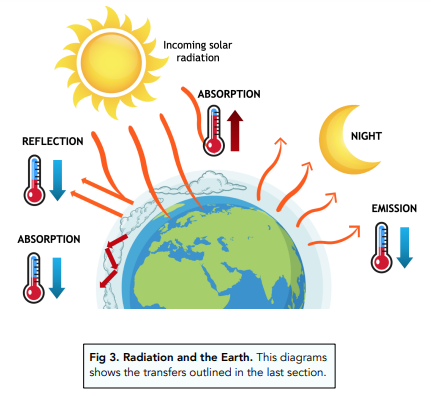Temperature of the Earth (GCSE Physics)
Temperature of the Earth
The Temperature of the Earth
Many factors control the temperature of the Earth. These include the following:
- Rates of emission and absorption. During the day, radiation is emitted by the Sun and absorbed by the Earth. This leads to an increase in temperature. Some of this radiation will be absorbed by the clouds and the atmosphere. This will lead to a decrease in the temperature again.
- Rates of reflection and radiation. The atmosphere will reflect some of the radiation from the Sun, leading to a decrease in temperature. At night, the Earth can also emit some radiation back into space. This leads to a decrease in temperature.
Through these systems, radiation is kept in balance and therefore the temperature of the Earth can also be kept fairly constant. Local temperatures can vary, but overall, the average temperature of the Earth stays roughly the same.
These factors may be affected by the concentration of greenhouse gases, such as water vapour, methane and carbon dioxide.
Diagrams
We can use diagrams to help us show the effects of radiation on the temperature of the Earth’s surface and atmosphere.






Still got a question? Leave a comment
Leave a comment